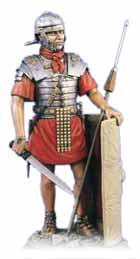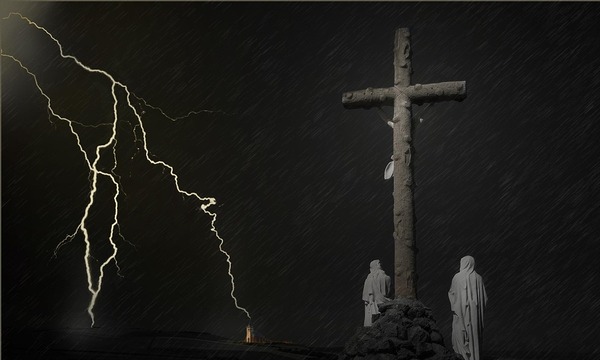 When I teach or preach from the Gospels, I always bring in relevant aspects of the historical and cultural background. Including such details not only helps us in our interpretation of the scene, but also helps us retell the story well – an essential part of preaching from narrative passages.
When I teach or preach from the Gospels, I always bring in relevant aspects of the historical and cultural background. Including such details not only helps us in our interpretation of the scene, but also helps us retell the story well – an essential part of preaching from narrative passages.
Several passages in the Gospels involve soldiers. Movies about Jesus, and most sermons about Jesus, portray all of these soldiers as Romans. We sometimes get the idea that there were centurions on every street corner. But is this the case? I have pulled together some of the information that we have about soldiers in Judea and Galilee in the first century, and included a few comments about each scene in the Gospels involving soldiers.
Herod the Great: During Herod’s rise to power, his personal army consisted of Jews as well as bands of foreign mercenaries. Rome also loaned Herod the use of three legions to help him expel the Parthian invaders and their puppet king, the Hasmonean prince Antigonus. But by the time of Jesus’ birth, Herod had no Roman troops; he still had a sizable Jewish army, as well as one cohort each of German, Thracian, and Gallic mercenaries. Herod continued to use some Roman advisors and officers.
Herod Antipas, tetrarch of Galilee: Herod Antipas also had his own army. Although details are sketchy, his soldiers were likely Jews and Gentile mercenaries, like his father’s army.
Pilate and other Roman governors: When Archelaus (another Herod) was removed from office in AD 6, Jerusalem and Judea fell under the control of the Roman governors. They kept four cohorts (a cohort was usually 6 centuries of 60-80 soldiers) and some cavalry in Caesarea Maritima, the Roman provincial capital, and one cohort in the fortress Antonia in Jerusalem. The cohort in Jerusalem was primarily in charge of protecting the fort and the arsenal. The governor came to Jerusalem at major feasts with additional cohorts, which were temporarily quartered in the Praetorium (the governor’s palace). Roman cohorts normally travelled with battle standards and shrines that honored their gods. However, the troops left these behind when they came to Jerusalem, since Romans (usually) tried to honor the religious customs and gods of their client nations. Since the “Roman” soldiers in the East were primarily recruited from the Syrian Greeks, they probably spoke Greek as their primary language, not Latin. Their senior officers were probably ethnically Roman or Italian.
The High Priest: The Roman governors allowed the priestly aristocracy to govern Jerusalem and Judea, although the governor appointed and removed high priests and kept the right of capital punishment. The high priest had his own Jewish troops (called ὑπηρέται, hyperetai in the Gospels). These primarily had police responsibility, but were also prepared for city defense.
Scenes involving soldiers:
Soldiers coming to John the Baptist: Some soldiers come to John the Baptist for baptism (Luke 3:14). Since John’s primary ministry was in Galilee, these are probably Jewish soldiers of Herod Antipas.
Gentile officer who comes to Jesus (Matt 8:5-13). It is possible that this officer is a Roman centurion, as it is normally interpreted. However, the word translated "centurion" is ἑκατοντάρχος (hekatontarchos), which refers to an officer of any army. Throughout the LXX (the Greek translation of the Old Testament), hekatontarchos is a standard title used for captains and administrators, translating the Hebrew title שָׂרֵ֣י מֵא֔וֹת(sarey meyot), “leader of a hundred” (Exod 18:21, 1 Sam 8:12, 2 Sam 18:1). Josephus uses the title to refer to officers in David’s army, the Roman army, and in his own rebel army. Since it is unlikely that Roman troops were stationed in Galilee, it seems possible, or even likely, that this man was a Gentile mercenary captain in the army of Herod Antipas.
The arrest of Jesus: John 18:3 mentions the cohort and officers of the high priest. Although “cohort” can refer to troops of any nation, in this case it refers to a squad (or more) of soldiers from the Roman cohort. In Jerusalem, a reference to “the cohort,” along with the mention of a χιλίαρχος (chiliarchos, commander of a cohort, John 18:12), makes it clear that Roman troops are present along with the officers of the high priest. Since civil disorder was always a possibility at Passover, the high priest decided to request a contingent of Roman troops to support this arrest. John’s wording can be interpreted to mean that some portion of the cohort was present, rather than the entire cohort.
Jesus before the high priest: When Jesus appeared before the high priest, only Jewish officers (ὑπηρέται) were present (Matt 26:58). One of them struck Jesus during the hearing (John 18:21); others beat him after the verdict (Mark 14:65). In the morning, these soldiers would have guarded Jesus as he was handed over to Pilate.
Jesus before Pilate: Pilate ordered Jesus to be beaten and mocked by his soldiers (Matt 27:27-30). These were from the cohort that had travelled down with Pilate from Caesarea Maritima. Most of these troops were recruited from the Syrian Greeks, known for their hostility towards Jews. Josephus records that in about AD 50, one soldier “mooned” the Passover crowds from the walls above the Temple and caused a riot; another was executed by the governor for tearing up a Torah scroll.
Jesus before Herod Antipas: Herod was in Jerusalem for the Passover, so Pilate sent Jesus to Herod, probably hoping to dodge the problem of executing Jesus. Herod’s soldiers, who were probably Jewish, mocked Jesus and gave him a royal robe (Luke 23:6-12).
The crucifixion: Since the Roman government reserved the right of capital punishment, Roman soldiers presided over the execution. Mark calls the presiding officer a κεντυρίων(kenturion), a Latin loanword, rather than the usual hekatontarchos. Crucifixion was reserved for acts of insurrection against Rome; the two criminals were likely compatriots of Barabbas, an insurrectionist.
The tomb: The high priest persuaded Pilate to seal Jesus’ tomb and post a squad of Roman soldiers (Matt 27:62-66). Since their failure to guard the tomb could result in their execution, the chief priests promised to use their influence with Pilate to protect them, if they would lie about the event.
There is more to say, as soldiers show up in Acts, and as metaphors in Paul's letters (maybe the topic of a later post). Paying attention to the “local color” of scenes in the gospels doesn’t always dramatically influence our reading, but it does help us retell the stories in an interesting and accurate way.
 Biola University
Biola University


.jpg)
